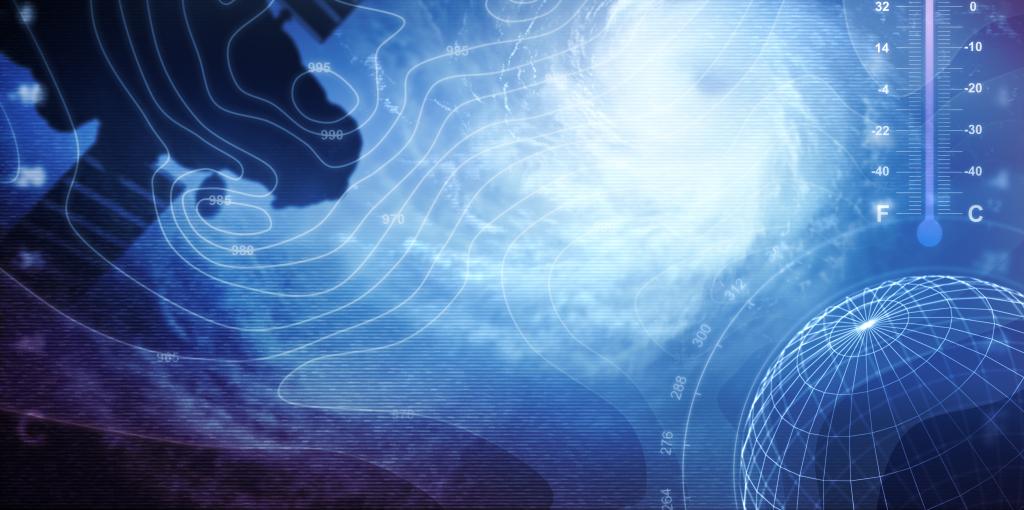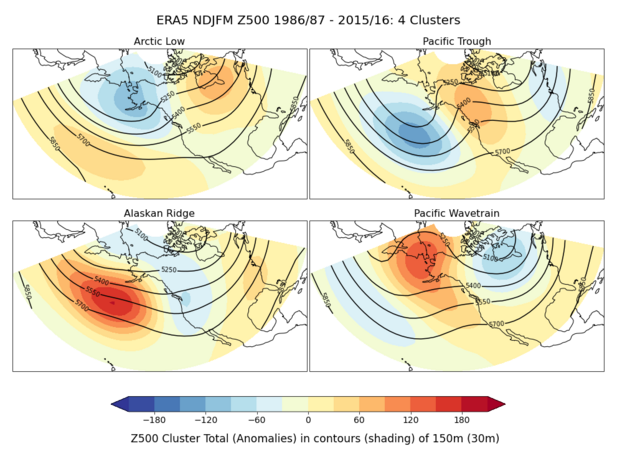Admission CTAs
Climate Science Master’s Defense
Climate Science Master’s Defense
Climate student Mary Korendyke defended her Master’s thesis during Fall Semester. The thesis, under the supervision of AOES professor David Straus, concerned the modelling of circulation regimes over North America and the Pacific Ocean. Circulation regimes are large-scale wind patterns that tend to form for extended periods of time. Better understanding these regimes may improve weather prediction over periods of days to weeks.
In each of the four circulation regimes that Korendyke studied, the air flow at about 5 km above sea level takes a somewhat different path, as shown by the black curves in the figure. (More precisely, the black contours represent average winter height (in meters) of the 500 mbar pressure surface for that regime). The different paths change the movement of airmasses and hence their temperature and precipitation. The circulation regimes are associated with distinct patterns of where the pressure surface is lower (blue regions in figure) or higher (red regions) than climatological (long-term average) conditions.
For her thesis, Mary Korendyke compared numerical models of weather to a data-based representation known as ERA. She tested models with increasingly high resolution. Surprisingly, the best results were produced not by the highest resolution (16 km between neighboring gridpoints) but by the middle resolution, (31 km). She also examined the longevity of the regimes, which often last a couple of weeks or more. The most long-lived episodes occur during winters of El Nino years. Finally, she examined how regimes impact atmospheric rivers, intense bands of moisture transport in the atmosphere, and how this impact is affected in the models. She found that the model is less able to well represent this regime dependence, and that while the model tends to undercount atmospheric rivers, what rivers are counted are consistent with observations. Future work includes a closer look into how well regime transitions are modelled, and whether the model’s moisture mechanism is responsible for the undercounting of atmospheric rivers.

